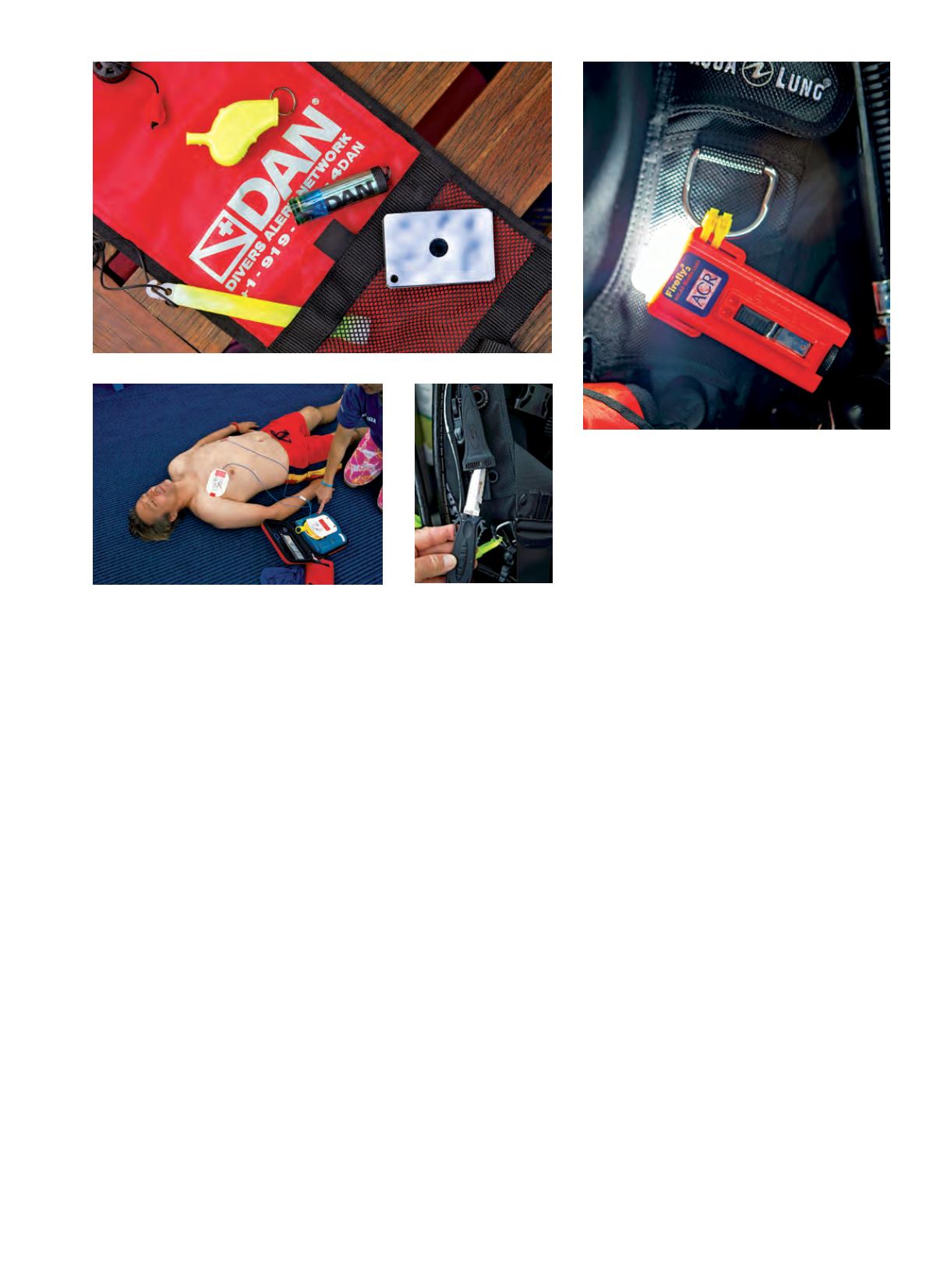
|
107
Clockwise from opposite: The Nautilus Lifeline is
a waterproof two-way VHF radio combined with a
GPS and emergency beacon. A variety of visible and
audible signaling devices reduces divers’ risk of
being lost at sea. Small, personal light sources help
dive buddies maintain proximity at night. Cutting
tools save lives in entanglement situations.One-third
of all dive fatalities are cardiovascular emergencies,
so AEDs are being seen more frequently in diving.
the difference between drowning and surviving in an
entanglement situation. There are a variety of cutting
tools including dive knives, line cutters and dive shears.
Besides helping divers escape from entanglement, shears
can also be used to facilitate the removal of a wetsuit
from a severely injured diver in a first-aid situation.
A newer piece of safety equipment that has become
available recently is the Nautilus Lifeline, a compact,
waterproof marine VHF radio with built-in GPS locator
technology that can be used in the water while on the
surface. If no boat is in sight upon surfacing, a diver can
simply push the Lifeline button to send an alert message
with his exact GPS position to boats within several
miles (up to 12 miles in ideal conditions). The Lifeline
is waterproof to a depth of 425 feet and can serve as
an emergency signaling and communication device for
divers and small watercraft operators. The device can fit
into a BCD pocket or can be clipped to the BCD.
Divers should attach any emergency equipment
they take underwater with them in a streamlined
manner that does not increase the risk of entanglement.
Some types of clips — including carabiners — could
potentially get caught on wrecks, abandoned nets or
traps, monofilament line or even kelp. Bolt snap clips are
a better choice since they are less likely to accidentally
become attached to something in the environment.
An even more streamlined option is to place safety
equipment in BCD pockets or accessory pouches.
Dive first aid kits are essential for dealing with
underwater or on-water injuries. First aid supplies
should be kept in waterproof containers to protect
them from the wet environment. Remote diving
adventures require more extensive first aid kits.
Oxygen units are essential for onsite treatment of
decompression illness and submersion incidents.
Many dive fatalities are related to sudden cardiac
arrest; an automated external defibrillator (AED) at
the dive site or on the dive boat increases the chance
of survivability. DAN® offers a variety of first aid kits
and emergency oxygen units in waterproof containers
designed for the marine environment.
Diver continuing education and emergency training are
invaluable in the management of emergency situations.
All scuba divers should take a rescue diver course. DAN
offers courses such as Emergency Oxygen for Scuba
Diving Injuries, First Aid for Hazardous Marine Life
Injuries and Neurological Assessment to prepare both
divers and nondivers for accidents and incidents.
There are many different pieces of equipment that
scuba divers can carry with them to increase their
safety and improve their ability to help others. Effective
emergency assistance requires good planning and having
the right equipment on hand — as well as the skills and
knowledge to use it. Make sure you always bring the
right emergency and safety gear for the environment and
conditions in which you are diving.
AD
STEPHEN FRINK
STEPHEN FRINK
STEPHEN FRINK
STEPHEN FRINK


